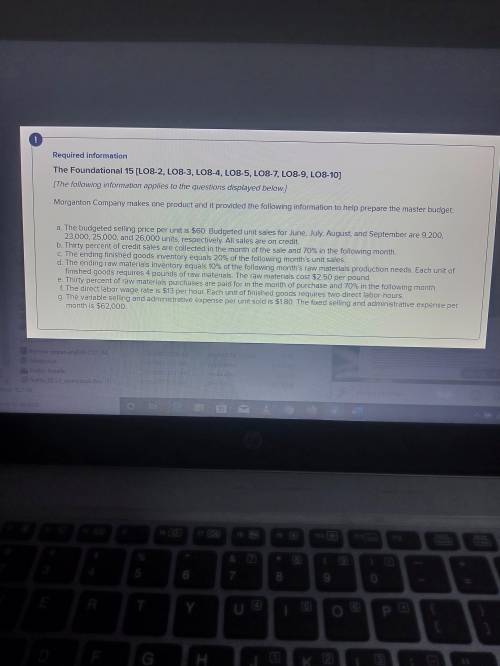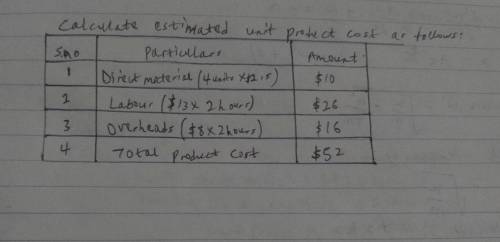

Answers: 3


Other questions on the subject: Business

Business, 22.06.2019 01:50, emm3456
Atlas manufacturing produces a unique valve, and has the capacity to produce 50,000 valves annually. currently atlas produces 40,000 valves and is thinking about increasing production to 45,000 valves next year. what is the most likely behavior of total manufacturing costs and unit manufacturing costs given this change? a. total manufacturing costs will increase and unit manufacturing costs will also increase. b. total manufacturing costs will stay the same and unit manufacturing costs will stay the same. c. total manufacturing costs will increase and unit manufacturing costs will decrease. d. total manufacturing costs will increase and unit manufacturing costs will stay the same.
Answers: 1

Business, 22.06.2019 09:30, missheyward30
What is the relationship among market segmentation, target markts, and consumer profiles?
Answers: 2

Business, 22.06.2019 15:40, arigamez90
Aprice control is: question 1 options: a)a tax on the sale of a good that controls the market price. b)an upper limit on the quantity of some good that can be bought or sold. c)a legal restriction on how high or low a price in a market may go. d)control of the price of a good by the firm that produces it.
Answers: 1

Business, 22.06.2019 19:10, keenansimpkinsoy0oqc
Imagine us is a startup that offers high definition 3d prenatal ultrasounds for high-end customers. the service process includes four activities that are conducted in the sequence described below. (the time required for each activity is shown in parentheses): activity 1: welcome a patient and explain the procedure. (20 minutes)activity 2: prep the patient (e. g., show them to the room, apply ultrasound gel). (17 minutes) (*your id number represents the amount of time needed to complete this task)activity 3: take images. (5 minutes)activity 4: discuss diagnostic with patient. (20 minutes)at each location there are employees (servers) s1, s2, and s3. the assignment of tasks to servers is the following: s1 does activities 1 and 2.s2 does activity 3.s3 does activity 4.a. what is the capacity of this process (in customers per hour)? b. suppose 3 patients arrive every hour on average. ignoring any “start of day” or “end of day” effects, what are the utilizations of all three servers (%)? c. suppose each activity can be done by any server and any server can do any set of activities. however, each activity is done by only one server. for example, a possible assignment includes: s1 does activity 1, s2 does activity 2, and s3 does activities 3 and 4. of course, the original assignment of servers to activities is also feasible. what is the maximum capacity of the process (in customers per hour)? d. now consider the capacity measures in (c) and (a), what is the percentage change? why can you improve capacity without using additional resources? (there is no free lunch, right? )note: for all hw assignments, show your process of getting the results. only providing the final answers is not acceptable and will get 0%. if necessary, use a separate sheet of paper to show your work.
Answers: 3
You know the right answer?
If we assume that there is no fixed manufacturing overhead and the variable manufacturing overhead i...
Questions in other subjects:


Geography, 30.08.2019 19:30



Mathematics, 30.08.2019 19:30

Social Studies, 30.08.2019 19:30

Mathematics, 30.08.2019 19:30

Health, 30.08.2019 19:30







